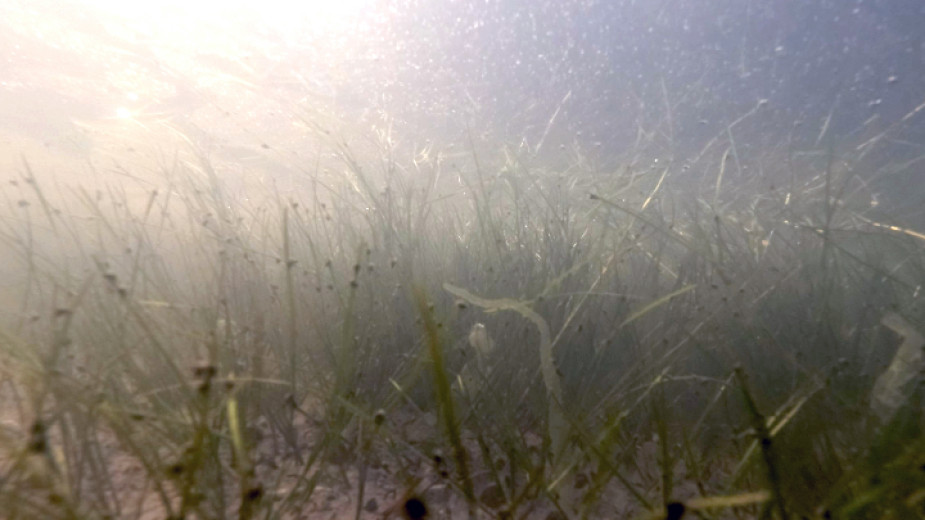 13
13
We present to your attention the second part of the journalistic study "Restoring coastal ecosystems - mission possible". The research has been carried out by BNR journalist Assia Chaneva*.
Assia Chaneva's journalistic research "Restoring coastal ecosystems - a mission possible" won the "Write for Climate” contest of the Bulgarian Biodiversity Foundation under the Climate Game On project of the DEAR program of the European Commission.
The research "Restoring Coastal Ecosystems - Mission Possible" shows:
- to what extent restoring coastal ecosystems in our country can provide low carbon adaptation and reduce climate risks while also providing biodiversity benefits;
- how anthropogenic pressures on coastal areas are assessed;
- whether there is a systematic approach to Black Sea coastal restoration;
- current projects on conservation and restoration of marine and coastal ecosystems, on which experts from the Bulgarian Biodiversity Foundation and scientists from the Institute of Biodiversity and Ecosystem Research are working;
- to what extent and which coastal ecosystems of the Black Sea act as a natural shield against storms, reducing their power, while also stabilizing the coastline and reducing the risk of soil erosion, and at the same time offering a safe haven for different ecosystems;
- what is the scientific evidence that climate change is affecting the biodiversity of coastal ecosystems.
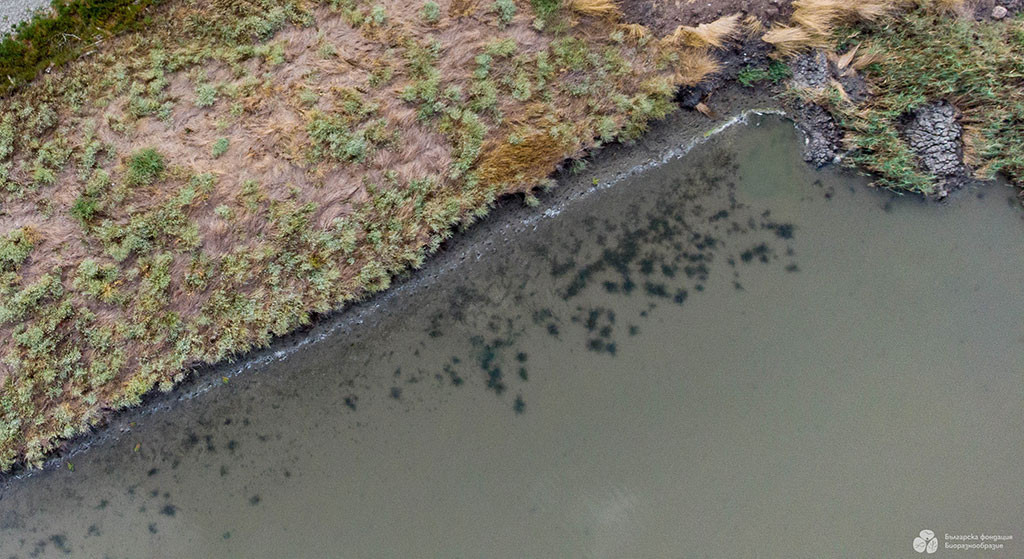
You can read the first part of the research "Restoring Coastal Ecosystems - Mission Possible" here.
You can read and listen in Bulgarian to the first part of the study "Restoring Coastal Ecosystems - Mission Possible" here.
The other 2 parts of the research "Restoring Coastal Ecosystems - Mission Possible" in Bulgarian can be found here and here.
Today we introduce you to the project: 'Maintaining the human-lake symbiosis for the benefit of species and habitats of European conservation concern /LIFE17 NAT/BG/000558 with a short title: "The Lagoon of Life".
The project is being implemented in the Natura 2000 area of Bulgaria's Atanasovsko Lake.

In 1984, the Atanasovsko Lake was declared a wetland zone of international importance in accordance with the Ramsar Convention and this territory was expanded in 2003.
There are many habitats in Atanasovsko Lake. Shallow waters are separated by dykes and barriers, either bare or covered to varying degrees with plain glass. Along the borders of the lake, there are freshwater pools with aquatic vegetation dominated by narrow-leaved cattail, broad-leaved cattail, and common reed. The lake is surrounded by freshwater pools, marshy meadows, a system of canals, and dry lands overgrown with sage, bulbous bluegrass, perennial ryegrass, and more.
Numerous bird species are attracted to the variety of habitats where they feed, nest, and rest, making the coastal lagoon a place inhabited by the highest number of bird species in Bulgaria. More than 315 bird species out of nearly 450 found in our country have been sighted in the Atanasovsko Lake area.
Atanasovsko Lake lagoon is located along the second largest bird migratory route in Europe – Via Pontica. It is a typical ‘narrow migration front’ site for migrating soaring birds. During the autumn migration period, one can observe around 240,000 white storks, over 30,000 great white pelicans, and around 60,000 birds of prey. The highest concentration of migrating great white pelicans and Dalmatian pelicans, western marsh harriers, and red-footed falcons in Europe can be found here. Atanasovsko Lake is second only to the Bosporus in the numbers of migrating lesser-spotted eagles.
The shallow and hypersaline waters of the lagoon freeze over only in very cold winters. That is why the overwintering Dalmatian pelicans, greater white-fronted geese, greylag geese, and red-breasted geese prefer it as a place to roost. Atanasovsko Lake is the most important breeding and overwintering location for the common shelduck.

The main objectives of the Project “The lagoon of life” are:
- To ensure full-scale restoration of the ecological processes supporting the unique biodiversity of Atanasovsko Lake;
- To establish a self-sustaining and financially viable mechanism to allow for the long-term conservation management of Atanasovsko Lake;
- To promote the benefits generated by Natura 2000 site Atanasovsko Lake.
The project started in 2018 and should be completed by 30 September 2024.
The project partners are:
Bulgarian Biodiversity Foundation (Coordinating Beneficiary) and Bulgarian Society for the protection of Birds/ BirdLife Bulgaria, Black Sea Salinas Ltd., Zaedno 2011 (Associated Beneficiaries).
Financing: The total budget of the project is 2,525,618 €. 75% of which is co-financing by the LIFE program of the European Commission and 25% from the partners.
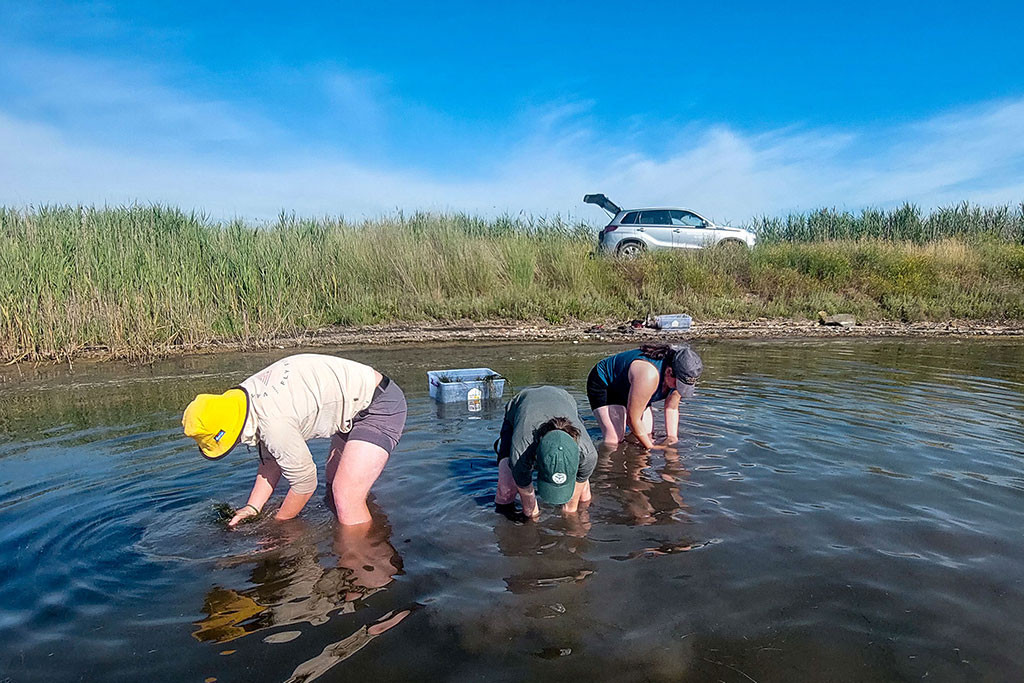
“The Lagoon of Life” project is a new opportunity to protect the human-nature symbiosis in Atanasovsko Lake and is one of the most complex and ambitious attempts at habitat restoration and coastal wetland management in Europe.
It is working at an ecosystem level to influence all the processes and interconnections, the different communities, species, and natural habitats, and the integrity of Atanasovsko Lake because when an ecosystem is healthy, it can regulate itself.
The project will completely rebuild 3 large dikes that existed more than 40 years ago to improve water circulation in the lagoon, to eliminate fluctuations in salinity and water level - a process that uses traditional technology, the same as that used to build these dikes in the early 20th century. This also creates 50 acres of new nesting territory for the birds.
A special focus of the project is the establishment of favourable conditions for the rare bird species European Great bittern. This will become possible by restoring a retention dam, which is currently filled with sediments and increases the flooding risk for the Lake. There, a mosaic of microhabitats is created for the entire life cycle of the European Great bittern, restoring the water regime and improving water conditions.
To reduce negative processes in the ecosystem, 17 km of inland saltwater channels and 15 km of mini dikes are to be restored, and the sea sluice "North" is to be repaired. This will maintain the vital link with the sea and restore the natural circulation of the lake's waters to create conditions for the migration of aquatic organisms.
The aquatic plant Ruppia maritima, which has disappeared in the past, will be recovered in Atanasovsko Lake to be used as an indicator for the enhancement of the water quality in the lake.

Spas Uzunov, Conservation Expert and ecologist from the project "The Lagoon of Life", explains the activities of the project:
"The channels and the dykes manage salt production, but they are also necessary to maintain the water regime of the entire ecosystem, to ensure water circulation, to protect the waters from mixing different types of salinity, which is dangerous for aquatic organisms, and to improve water quality. When water circulates in the lake, nutrients and oxygen are exchanged, and this leads to a reduction in pollution that comes from the surrounding areas – from agriculture and from domestic fecal pollution, aiding the natural sedimentation processes that bring pollutants into the sediments. Last but not least, these structures - levees, mini dykes, and dikes are the nesting sites of most nesting bird species, all of which are of conservation importance - sablefish, waders, oystercatchers, various tern species because they are associated with this habitat - hypersaline waters. There are not many such habitats in Europe and even fewer in Bulgaria.
Burgas Bay is the largest area with seagrasses on the Bulgarian Black Sea coast.
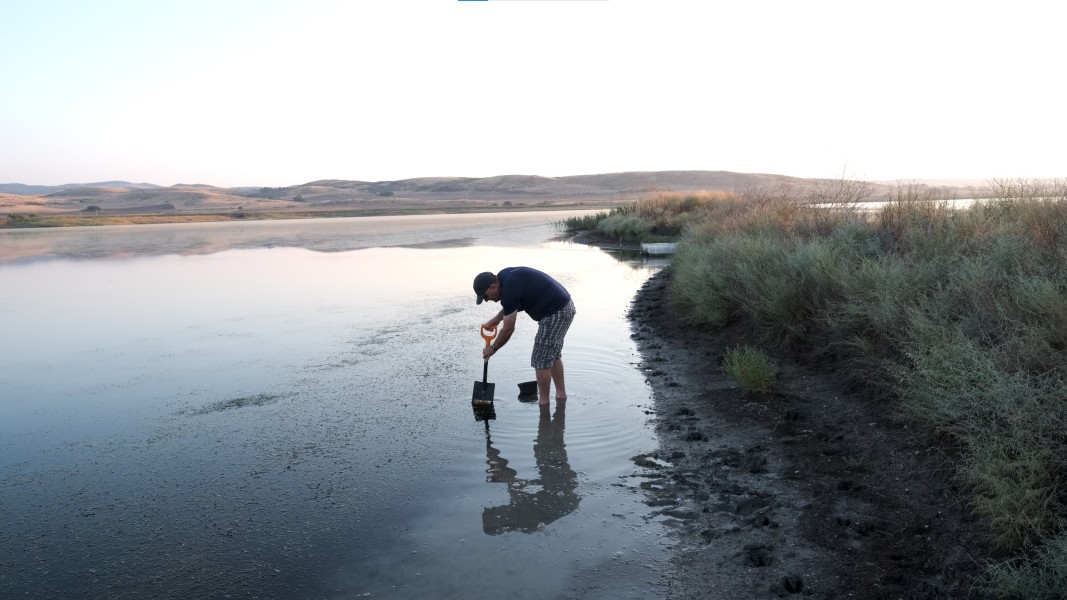
Our original intentions for the restoration of the plant Ruppia maritima in Atanasovsko Lake were ecological and practical.
Ruppia has important functions in the lake ecosystem, currently, it is the only macrophyte species that inhabits Lake Atanasovsko. It is a freshwater vascular plant but is highly tolerant of saline waters. Ruppia is not a marine plant, is a salt-tolerant freshwater species.
By restoring the Ruppia we wanted to increase the value of the Atanasovsko Lake habitat - this is important for the ecological condition of the lagoon - when we have a great diversity of animal and plant life, the ecosystem is healthier and more resistant to external impacts. Ruppia also reduces the strength of the waves in the lake - the water currents become weaker and so turbidity and pollution are reduced - i.e. it improves the quality of the water environment.
Ruppia also has a purifying function - its leaves, when photosynthesize, purify the water of nitrogen, phosphorus, and other biogenic pollutants, enriching it with oxygen.

The roots of the Ruppia, in turn, introduce oxygen into the water and thus create conditions for the development of soil organisms.
The underwater sea meadows with Ruppia are important habitats for various invertebrates - mollusks, and crustaceans, but also for two of the fish in Atanasovsko Lake - a species of Syngnathus and one species of the Gasterosteidae live in the leaves of Ruppia.
Seagrasses play an important role in reducing the effects of climate change. We cannot yet measure this impact of Ruppia in Atanasovsko Lake, because we have only recently restored it and the area of Ruppia meadows is still small, and the effect is not yet very large, but the potential of seagrasses is very high.
Seagrasses are species that grow very quickly under good conditions, they can take over huge areas in just one season.
Through photosynthesis, seagrasses absorb carbon emissions and through the root system, these emissions go into the substrate, into the bottom.
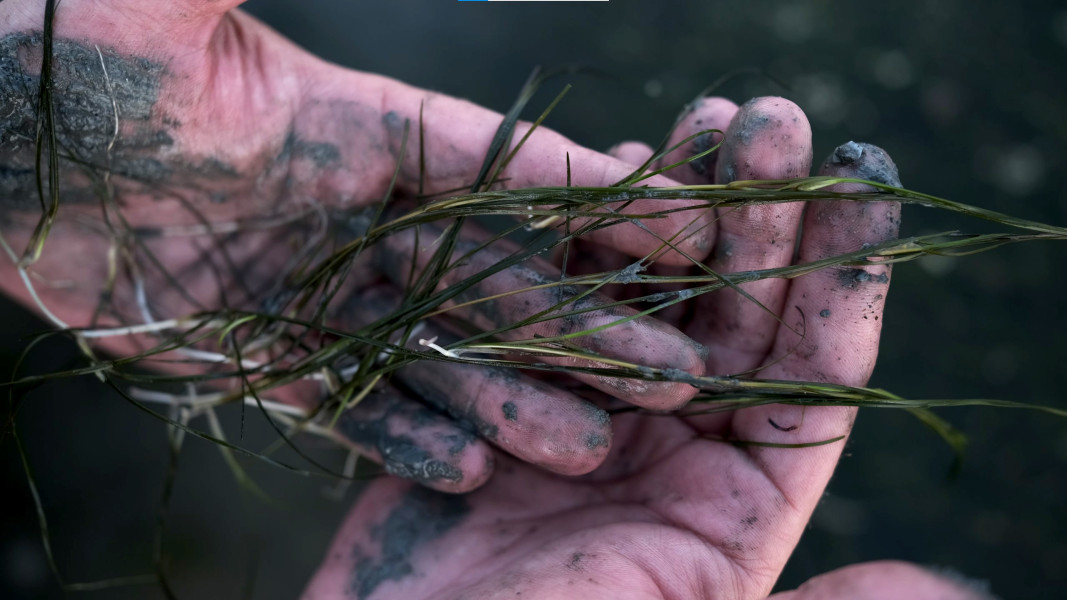 The big problem of climate change is that we as mankind, through fossil fuels, are taking huge amounts of carbon that has been locked up in soils for millions of billions of years and releasing it into the atmosphere and it has nowhere to go but to build up in layers to cause the greenhouse effect.
The big problem of climate change is that we as mankind, through fossil fuels, are taking huge amounts of carbon that has been locked up in soils for millions of billions of years and releasing it into the atmosphere and it has nowhere to go but to build up in layers to cause the greenhouse effect.
It has been scientifically proven that humans are the cause of rising temperatures and climate change.
Seagrasses are an absolutely free and very effective solution, they have a great capacity - they absorb carbon up to 35 times more efficiently and faster than tropical forests."
You can read the original article in Bulgarian HERE.
You can learn more about Lake Atanasovsko and the project” The lagoon of life” here.
-----------------------------------------------------------------------------------
* Assia Chaneva is the author and presenter of "Alarm" - the evening broadcast of the Hristo Botev program of the BNR, which in 2022 marks 15 years since its launch. Assia Chaneva is also the author and presenter of the Green Minutes column for ecology and climate in the "Labyrinths of Knowledge" show. The column is broadcast from January 7, 2021, every Thursday after 4:00 p.m. on the Hristo Botev channel of the BNR.
Assia Chaneva is a member of the second cohort of OCJN - Oxford Climate Journalism Network.
OCJN is a Reuters Institute program for reporters and editors around the world, supporting them to develop the quality, understanding, and impact of journalistic coverage of climate change.
From July to December 2022, OCJN trained 100 journalists from 56 countries, only 9 were from Eastern Europe, and Assia Chaneva is the first Bulgarian journalist accepted into the Oxford Climate Journalism Network program.
Radmila Sekerinska from North Macedonia appointed NATO Deputy Secretary General NATO Secretary General Mark Rutte has appointed Radmila Sekerinska from North Macedonia as the next NATO Deputy Secretary General. “I am happy to announce..
The traditional Bulgarian Christmas picnic, organized by the Bulgarian Cultural and Social Association "Rodina - Sydney" and the Bulgarian School "Dr. Petar Beron", will take place on December 8 , 2024 in St. Leonards Park in Sydney. "We have..
The Bulgarian national minority in Albania is one of the largest in the country, according to data from the latest official population census. A total of 7,057 individuals identified as Bulgarians. For comparison, 23,000 people identified as Greeks,..
The Varna Regional Library "Pencho Slaveykov" has acquired a humanoid robot. It was unveiled by the library's director, Radka Kalcheva, during the..

+359 2 9336 661
